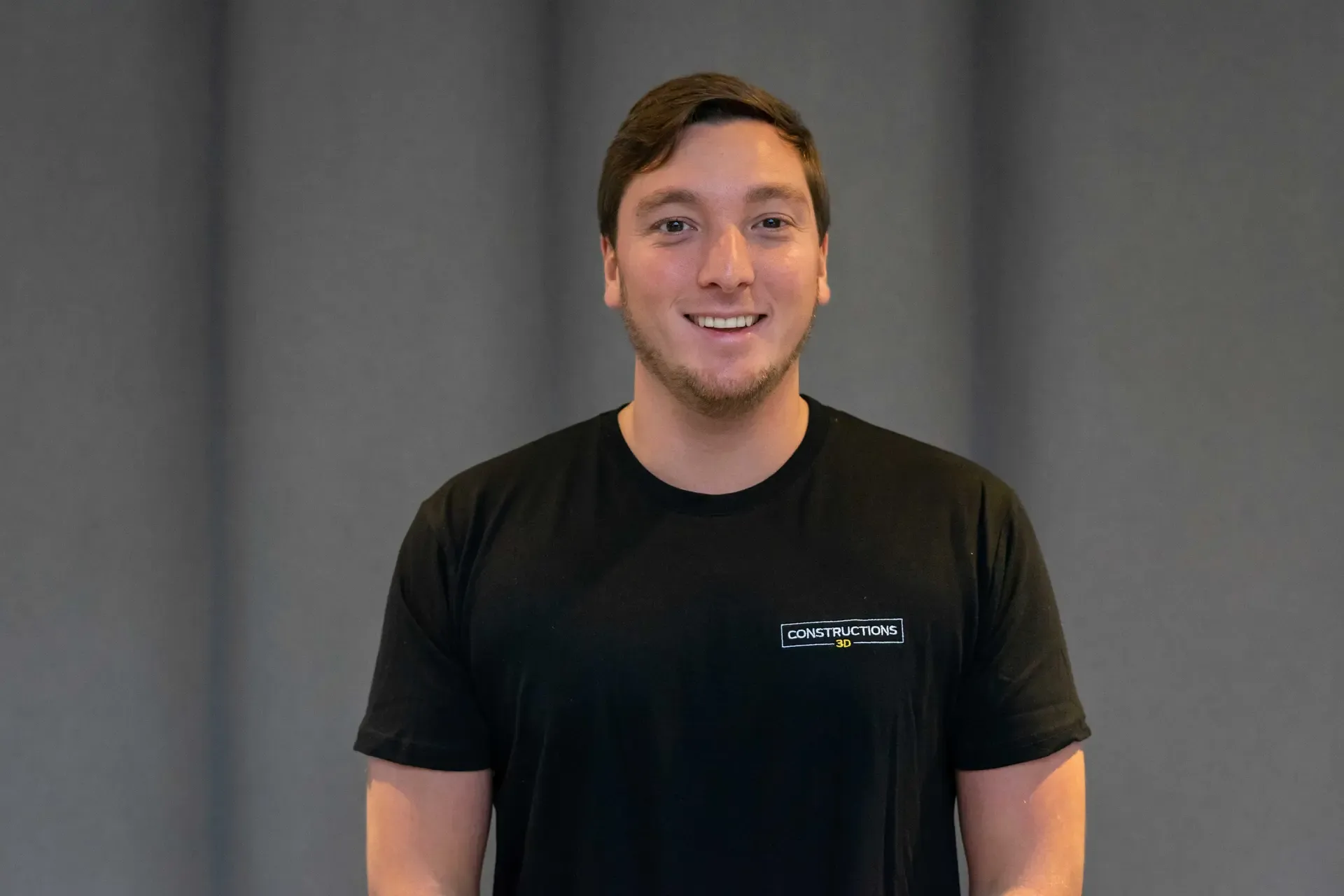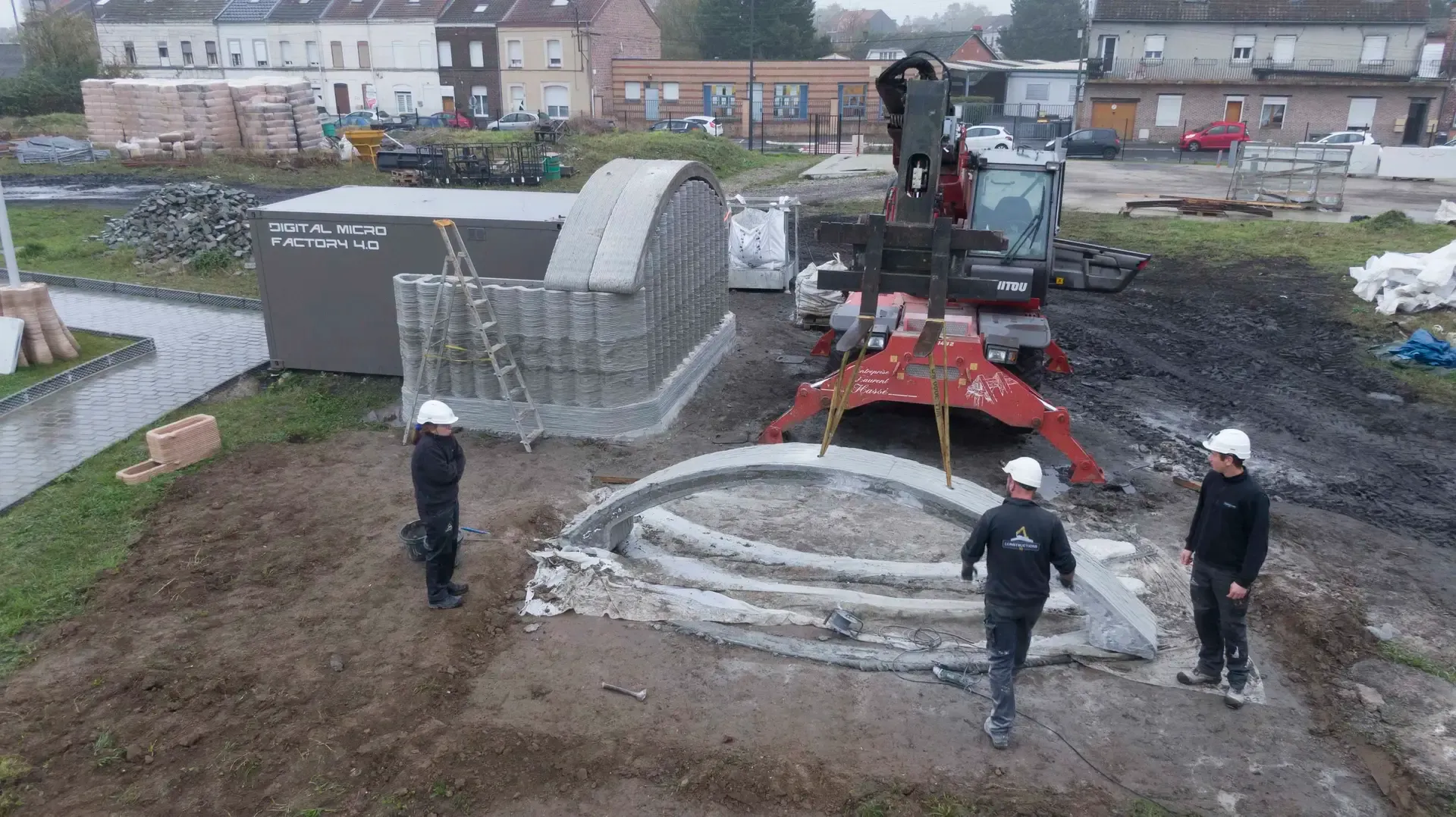What is South America saying about 3D concrete printing?
Interview with Gonzalo Vargas Kunzagk – Constructions-3D Development in South America
Published on 14 May 2025

Constructions-3D in South America: 3D Concrete Printing as a Solution to Tomorrow’s Major Challenges
At Constructions-3D, innovation truly comes to life when it addresses real-world challenges. In South America, where housing crises, rapid urbanization, and climate resilience are pressing issues, 3D concrete printing offers an unprecedented technological opportunity. To drive this vision forward, Gonzalo Vargas Kunzagk, Business Manager for the MENA region and strategic partner for development in South America, leads Constructions-3D’s expansion on this rapidly evolving continent.
In this interview, he shares his journey, mission, ongoing progress in the field, and his ambitious vision to make 3D concrete printing a key driver for fast, sustainable, and inclusive construction across South America.
Could you please briefly introduce yourself? What is your role at Constructions-3D?
My name is Gonzalo Vargas Kunzagk. I am the Business Manager for the MENA region and a strategic partner for Constructions-3D in South America. My role is to lead the development and expansion of Constructions-3D technology in these regions. I work on opening new markets, building strong partnerships, and positioning Constructions-3D as the technology that will revolutionize the construction industry.
How did you become interested in 3D printing for construction?
During my time in California, while working for a startup focused on innovation in the construction sector, I was constantly searching for disruptive technologies capable of transforming the industry. That’s when I discovered 3D concrete printing. The idea of building faster, more sustainably, and with less waste seemed to offer a concrete solution to the major challenges in the field.
As I researched the most advanced players in this area, I came across Constructions-3D in France. Their vision and technology matched exactly what I envisioned as the future of construction. From that moment on, I wanted to contribute to this movement and bring it to South America.
What is your primary mission in developing the South American market?
My mission is to position Constructions-3D as a pioneer in South America by creating the first technology hub dedicated to 3D concrete printing. We aim to transform the way construction is done in the region, making the process faster, more efficient, and sustainable.
My goal is to help address one of the region’s biggest challenges: the housing crisis. With this technology, we can support governments, developers, and communities by providing smarter, more accessible, and future-proof construction solutions.

What do you think makes South America a favorable market for 3D concrete printing?
South America faces major challenges related to housing, infrastructure, and urban development. 3D concrete printing offers a faster, more cost-effective, and sustainable way to build. Traditionally, our region adopts new technologies only after they have been validated elsewhere, but I am convinced it is time to change this. By embracing this technology now, we can become leaders in construction innovation and provide concrete solutions to the housing crisis across the continent.
Which countries are currently the most advanced or receptive to this technology?
Currently, Brazil, Chile, and Colombia are the most receptive countries. These nations are actively seeking innovative solutions for affordable housing, climate resilience, and urban planning. In Chile and Colombia, pilot projects have already been launched to test local materials and ensure the technology works effectively, especially in seismic zones. These projects are crucial to demonstrate that 3D printing is a viable solution for building homes in South America.
Are there any local specificities (technical, cultural, regulatory) that need to be considered?
Yes, introducing a new technology into the construction sector is never simple. Many builders prefer traditional methods and perceive innovations as risky or unfamiliar. Moreover, each country has its own regulations, especially in seismic zones like Chile or Peru, where standards are particularly strict. Current regulations do not yet include 3D printing, so new standards are necessary. Success requires fully integrating local culture, regulations, available materials, and professional practices on site.

Can you tell us about a current project in Peru or elsewhere on the continent?
Currently, we are still in the pilot phase in Chile, Colombia, and Brazil, where we are testing materials and 3D printing technology, particularly in seismic regions. We have not yet built complete houses, as we are still refining the processes to ensure their reliability. We are also studying local regulations to be able to quickly launch the construction of safe homes. The first results are expected within about a year.
Which sectors show the most interest: affordable housing, infrastructure, or education?
The sector showing the most interest currently is social housing. In South America, there is a significant need for affordable and sustainable housing that can be built quickly. Educational projects are also being explored, mainly to test materials and printing processes. However, social housing remains the primary priority due to its potential to address the housing crisis.
How are local institutions and companies responding to this innovation?
The response remains cautious and slow, mainly due to a lack of knowledge about this technology. Universities are beginning to make progress through pilot projects, but the private sector has not yet fully embraced 3D printing due to uncertainties about its practical integration into their operations.

How do the MaxiPrinter and MiniPrinter meet the needs of the South American market?
Both 3D concrete printers offer unique advantages. The MaxiPrinter is perfectly suited for large-scale construction projects, ideal for urban developments and housing, while remaining practical and portable for use in remote areas. The MiniPrinter is especially effective for testing new materials, developing formulations, and training engineers at universities.
Have you adapted any technical aspects (materials, logistics, training) to the local market?
Yes, we work with local companies to produce materials tailored to our technology and regional needs. We also take into account the specific logistics of each country and place strong emphasis on training local engineers, particularly in Chile, who then become experts capable of further developing the technology.
Where do you think we will be in South America in one year?
In one year, I believe we will have at least one operational pilot project in Chile. This project will concretely demonstrate our technology’s ability to address challenges related to housing, construction speed, and environmental sustainability.
What is your long-term vision for 3D concrete printing on the continent?
Our long-term ambition is to become the leader of this technology in South America by radically transforming construction industry practices. This technology will improve building methods, reduce waste, accelerate projects, and sustainably and resiliently address urgent housing needs.

In conclusion, the development of Constructions-3D in South America, led by Gonzalo Vargas Kunzagk, perfectly illustrates the power of innovation to address major societal challenges. Through a strategy rooted in local realities, a commitment to skill transfer, and proven technology, 3D concrete printing paves the way for a new way of building: faster, more sustainable, and more accessible. This is no longer a vision of the future but a transformation underway, driven by a clear ambition: to build differently in order to better meet the needs of communities.








